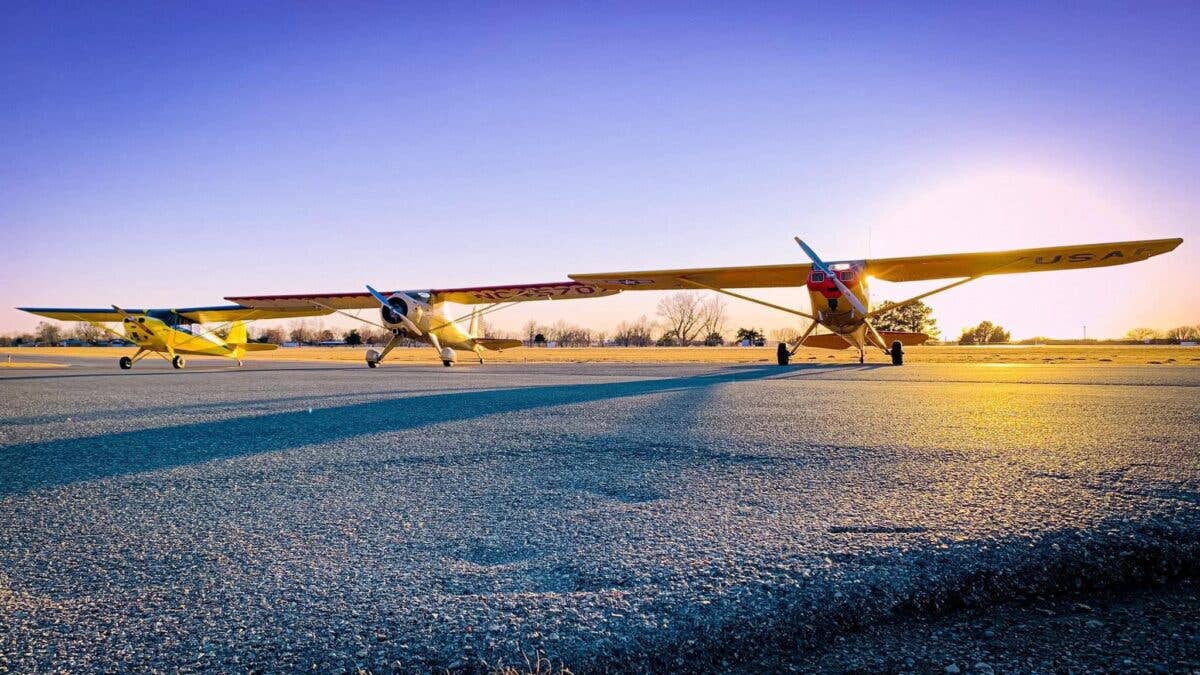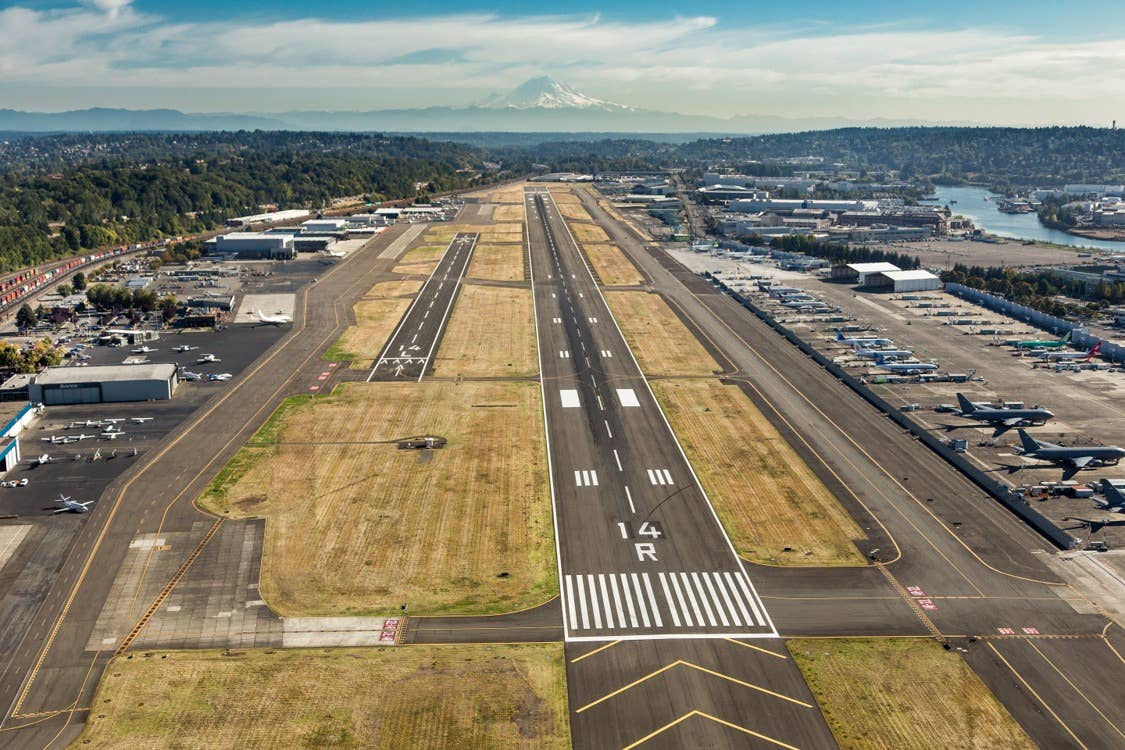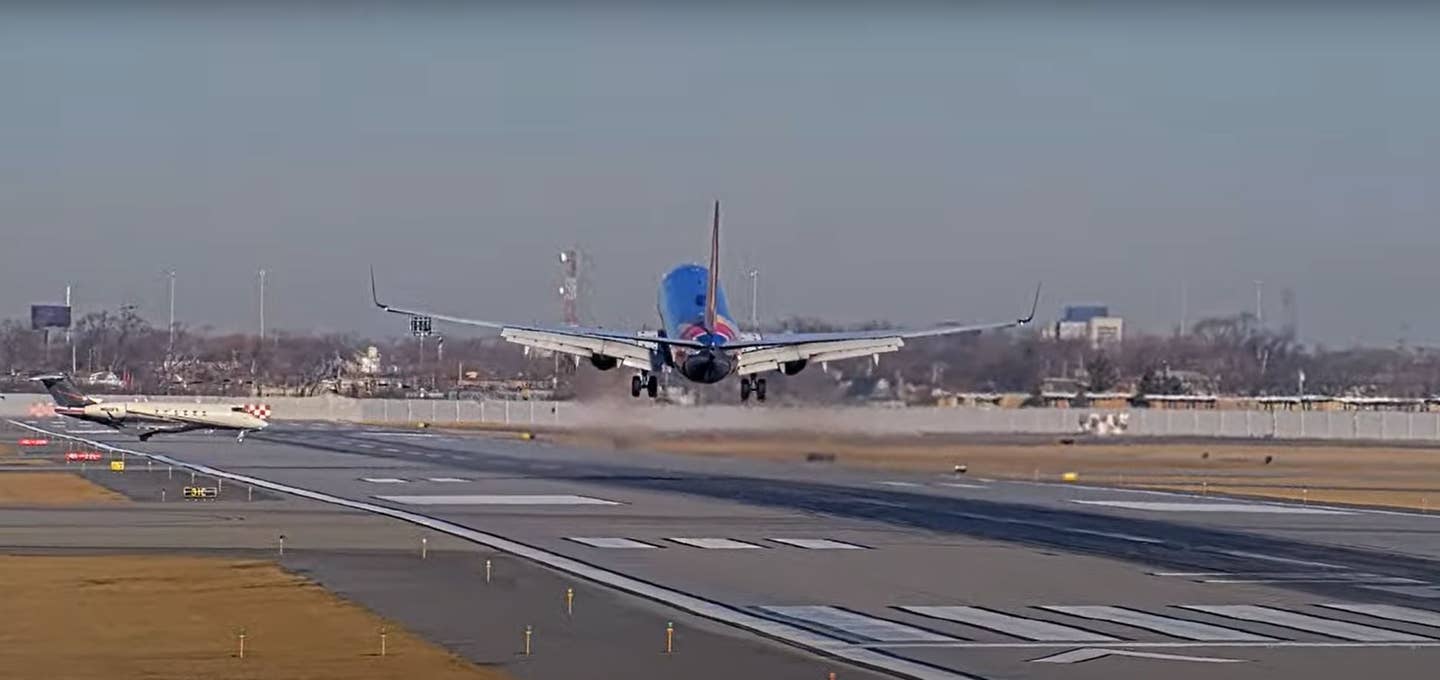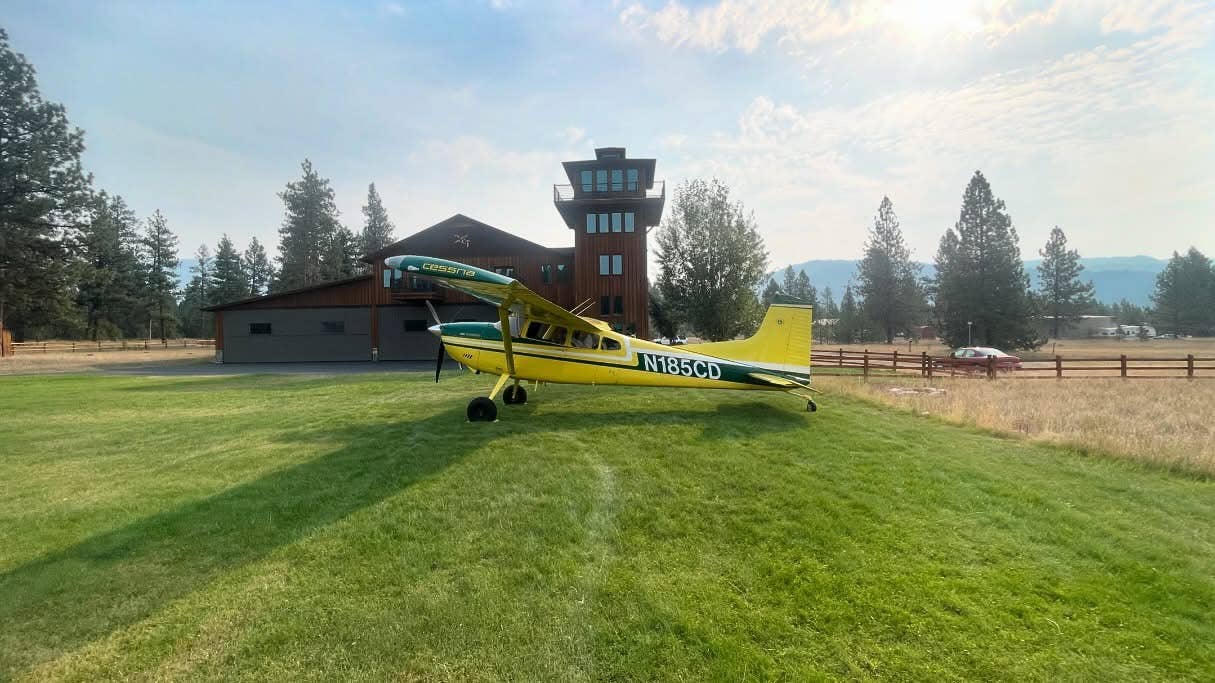Oklahoma Banking on Watonga Regional Airport Runway Upgrades
The airport’s new 4,000-foot runway is expected to bolster the state and local economies.

Three vintage high-wing aircraft on the ramp at Watonga Regional Airport. [Courtesy: Oklahoma Aeronautics Commission.]
The Oklahoma Aeronautics Commission has recently invested a considerable amount of capital into the Watonga Regional Airport (KJWG).
According to the Commission, “This project consisted of reconstruction of the existing 4,000-foot by 60-foot runway in its current location to meet Federal Aviation Administration (FAA) standards. Also included in the project was the installation of new LED runway edge lights and an obstruction survey of the area to develop new instrument approach procedures that will ensure the airport has 24/7 access in all weather conditions. The total project cost was just under $2.8 million and was funded by grants entirely from the FAA due to ARPA [American Rescue Plan Act] funds provided by Congress.”
Officials are optimistic about this investment’s return to the local and state economy. On November 15, a ribbon-cutting ceremony was hosted to showcase their dedication to the airport and their excitement for its new 4,000-foot runway.
In addition to the ceremony, attendees heard from local and state dignitaries including Mayor Bill Seitter, Representative Mike Dobrinski, and State Director of Aeronautics Grayson Ardies.
Ardies explained the importance of the project, saying, “This airport’s runway pavement was exhibiting significant distresses as it had been over twenty-five years since its last major project. As the state’s agency for aviation and aerospace we were well positioned to program these federal funds for the rehabilitation of a major runway asset in western Oklahoma.”
Representative Dobrinski further elaborated, stating, “As the Representative for Blaine County, this new runway is necessary for the continued growth of the aviation community throughout western Oklahoma. I am confident this will bring lift to the local economy by bringing new opportunities and better infrastructure to the area.”
The investment is expected to further bolster the economic engine that the airport serves as for the community.
“Watonga Regional Airport has a $1.2 million annual economic impact, and the airport is home to several aviation agriculture businesses along with being used by numerous oil and gas operations as well as other local entities.”
Jena Ohman, who has served as the airport’s manager since January 2017, is extremely enthusiastic about the recently unveiled updates.
“We had done crack seals and other things to the runway over recent years, and it just wasn’t getting the job done. So, we really needed the full reconstruction of Runway 17/35 that we got done. Here at Watonga, we have 18 T-hangars and three larger box hangars, that we call commercial hangars. Between those, we have about twenty-three based aircraft here,” she said.
“We have jet-A and 100LL here, both of which are self-serve. Those tanks were put in in 2018, after we had gone several years without any fuel," Ohman said. "When I first took over, getting fuel was one of my first main goals. I had to convince the council: ‘I understand it’s a huge investment, but without fuel, your chances of having much air traffic are just slim to none. People aren’t going to come by here unless you have fuel, you know?’”
Ohman continued, “The airport is super important to the community. We have a ton of agriculture around here. My husband and I are actually the ones that own the aerial spraying business that is based at the airport. Being in touch with the community for that operation is huge. Most traffic here is agriculture aviation, but we also have a lot of oil and gas operations in the area. When I first started, there was an oil boom and companies would come in from Dallas, Kansas City to this airport because we were able to give them a courtesy car. It was very convenient for them, and we had a lot of traffic. Because we are an hour away from Oklahoma City by car, it’s nice to be able for people to come to a smaller airport like us and for it to still be convenient with services that larger airports have.”
The investments that have occurred in recent years help to ensure an optimistic future for the airport. “These improvements are definitely not where we stop. Our next goals are expanding for new hangars, for individuals to be able to build their own hangars on the west side of the airport—which is undeveloped at this time. First, we are going to get taxiways on the west side completed, so people are able to build, and then an update to our terminal building, which is an older building.”

Sign-up for newsletters & special offers!
Get the latest FLYING stories & special offers delivered directly to your inbox






